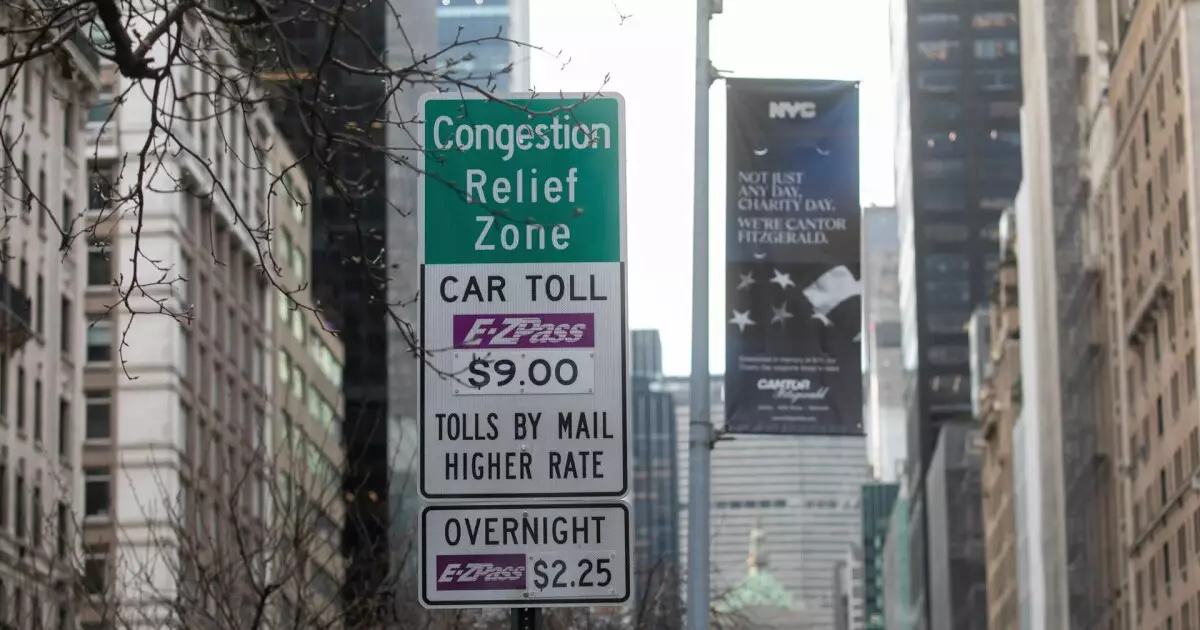On the first Sunday of the month, the New York Metropolitan Transportation Authority (MTA) officially set in motion its long-awaited congestion pricing plan for vehicles entering lower Manhattan. This initiative marks a significant moment in urban transportation management, making New York the first city in the United States to impose tolls specifically to combat traffic congestion. The congestion pricing program’s commencement has been a tumultuous journey, marred by legal challenges and political upheaval, yet it ultimately aims to alleviate overcrowding while funding crucial infrastructure projects.
The primary objective of the congestion pricing program is to reduce vehicular congestion and the pollution associated with it, generating an estimated $1 billion annually for the MTA. By charging a base toll of $9 per entry into the designated “Congestion Relief Zone,” officials predict a substantial decrease in traffic volume—approximately 80,000 fewer vehicles daily. With the introduction of advanced technology, including 1,400 cameras and 800 traffic signs, the MTA is poised to monitor and manage traffic patterns effectively. This multifaceted approach aims not only to create a smoother flow of transportation but also to promote public transit as a faster and more convenient alternative.
The concept of congestion pricing is not novel; it dates back to 2007 when then-Mayor Michael Bloomberg first proposed it. However, it took a decade for this idea to gain traction amid a landscape of political resistance and significant public skepticism. The MTA’s genesis for this program was finally codified into law in 2019 as part of a broader strategy to enhance funding for the agency’s capital projects. The implementation faced further delays from the Trump administration and a series of court challenges, creating an intricate web of obstacles that the initiative had to overcome.
Following a brief halt in June, 2023, instigated by Governor Kathy Hochul, the program was revived in November with adjusted toll rates, reflecting the state government’s willingness to compromise on its original plans amidst ongoing legal disputes and stakeholder feedback.
MTA has ambitious plans for how to utilize the expected revenues from congestion pricing. Initial estimates indicate that the generated income will support $15 billion in bonds, aimed at financing capital projects vital for modernizing New York’s aging transit infrastructure. However, CFO Kevin Wilens noted that the adjusted toll rates may affect the timing of these bond issuances. Planning is essential for the MTA as it faces fluctuating revenue streams in the program’s early stages; effectively managing the timing of bond issues will be crucial to ensure financial stability and avoid over-leveraging.
The anticipated success of congestion pricing depends heavily on public acceptance and willingness to abandon vehicular travel in favor of mass transit alternatives. MTA officials hope that this initiative demonstrates the tangible benefits of transit systems, encouraging shifts in commuter behavior.
Despite the recent victory in implementing the congestion pricing strategy, the program is not in the clear. New Jersey’s ongoing legal challenges showcase the significant pushback that can be expected from neighboring states, further complicating the MTA’s mission. The implications of these lawsuits could potentially delay further enhancements to New York’s transport infrastructure, revealing how contentious the dialogue around urban planning and transportation equity can become.
Moreover, as congestion pricing unfolds, urban planners and policymakers across the U.S. will be observing closely. New York’s experiment may act as a reflection point for other major cities grappling with similar issues regarding road congestion and environmental concerns. While its successful implementation has raised the profile of congestion pricing nationally, it also highlights the challenges and complexities of urban transit management in an era of rapid change.
New York’s activation of congestion pricing represents more than just a toll; it embodies a shift toward more sustainable urban mobility practices. As residents and officials navigate through this new chapter, the focus will inevitably turn towards its long-term effects on traffic patterns, public health, and the overall transit landscape, setting a precedence for cities looking to address their own congestion challenges.

